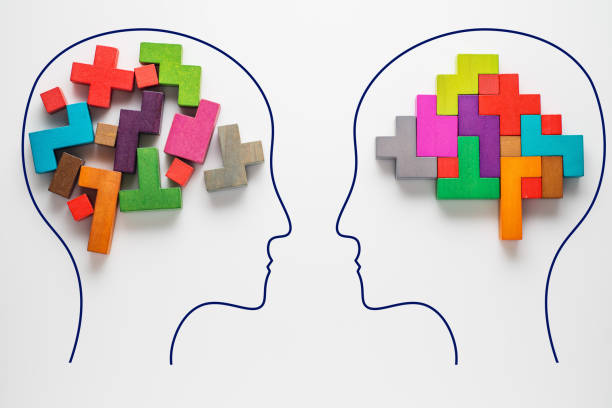Reading is a fundamental skill that is crucial for a student's academic success. It forms the foundation for most learning, allowing students to access information across various subjects.
However, many students face reading challenges that can hinder their progress in other subjects and lead to frustration and learning difficulties.
This blog post aims to explore five common reading problems experienced by students.
By understanding these most common reading and five learning difficulties, and exploring strategies to overcome them, students, parents, and educators can work together to foster a love for reading and help students reach their full potential.
The five reading problems we will discuss are:
- Decoding issues
- Poor reading comprehension
- Lack of fluency
- Limited vocabulary knowledge
- Lack of motivation and engagement
Each of these problems can present significant challenges and difficulties for students of early age, middle school, high school up to college. However, with the right approach and support, they can be addressed effectively.
Throughout this post, we will examine the characteristics of each problem, and the factors contributing to underlying difficulty in their development, and offer practical strategies to help students overcome these obstacles.
By the end of this post, readers and teachers will better understand these most common reading problems and reading difficulties, and be equipped with tools to support students in their reading journey.
1. Decoding issues

Decoding written language is the process of translating written symbols into sounds and words. It is a crucial skill that forms the basis of reading.
Students who struggle with decoding may have difficulty reading words accurately and fluently or reading difficulty, which can impact their reading comprehension.
Common decoding difficulties include:
Trouble with letter-sound correspondence:
- Some students may struggle to associate specific sounds with their corresponding letters or letter combinations. This can make it challenging to sound out words and blend the sounds correctly.
- Difficulty with syllabication: Breaking words down into syllables is an important decoding skill. Students who have trouble identifying and separating syllables may find it harder to decode longer, more complex words.
- Struggling with sight words: Sight words are high-frequency words that should be recognized instantly, without the need for decoding. Students with decoding issues may struggle to memorize and recall these words quickly, which can slow down their reading.
Students with decoding language processing issues may also read words slowly, hesitate, break words frequently, or guess at unfamiliar words. This can lead to frustration and a lack of confidence in their reading abilities.
To help students improve their decoding skills, consider the following strategies:
- Explicit phonics instruction: Teach students the systematic relationships between letters and sounds using a structured, sequential approach.
- Practice with decodable texts: Provide students with texts that focus on specific phonics patterns they are learning.
- Multisensory approach: Engage students' various senses in the learning process using hands-on activities, visual aids, and kinesthetic movements.
By addressing reading problem decoding issues early and providing targeted support, students can develop a strong foundation in word recognition, setting them up for success in both reading problem comprehension and fluency.
It is important to remember that every student learns differently, so a combination of strategies and individualized attention may be necessary to help students overcome their decoding challenges.
2. Poor reading comprehension

Reading comprehension is the ability to understand and derive meaning from text. Students with poor either reading ability and comprehension may struggle to grasp main ideas when understanding the text, follow complex plots when understanding text, or make inferences from written words.
Factors contributing to poor comprehension include:
- Lack of background knowledge: When students lack prior knowledge about a topic, they may find it challenging to understand and relate to the text. Building background knowledge through discussions, videos, or hands-on experiences can help bridge this gap.
- Weak vocabulary skills: Students with limited vocabulary may struggle to understand keywords and concepts in a text. Explicit vocabulary instruction, including teaching word roots, prefixes, and suffixes, can help expand students' vocabulary and improve their comprehension.
- Difficulty making inferences: Some students may have trouble reading between the lines and drawing conclusions based on implied information. Teaching students to use context clues and to ask questions while reading can help them develop inferential thinking skills.
- Trouble with text structure: Understanding how a text is organized (e.g., compare/contrast, cause/effect) can be challenging for some students. Explicit instruction on different text structures and how they convey information can help students navigate and comprehend texts more effectively.
To enhance comprehension, consider the following strategies:
- Activating prior knowledge: Encourage students to connect their knowledge with the text they are reading.
- Teaching vocabulary in context: Provide explicit instruction on key vocabulary words and teach students to use context clues.
- Encouraging questioning and summarizing: Teach students to ask questions while reading and to summarize main ideas and details.
- Explicit instruction on text structures: Help students recognize and understand different text structures.
By addressing common reading problems, addressing the factors that contribute to poor reading comprehension, and providing targeted strategies, students can improve their ability to understand and analyze texts effectively.
3. Lack of Fluency

Reading fluency is the capability of most children to read text accurately, fluidly, and with suitable speed and expression.
Fluent readers can focus on understanding the meaning of the text rather than decoding individual words. Students struggling readers who lack fluency may struggle to comprehend what they read, as their attention is diverted most reading problems to individual sounds and the mechanics of reading.
Characteristics of non-fluent readers include:
- Slow and laborious reading: Non-fluent readers may read at a significantly slower pace than their peers, often sounding out each word individually rather than reading smoothly and automatically.
- Poor prosody (lack of expression and intonation): Fluent readers use appropriate pitch, tone, and phrasing to convey the meaning and emotion of a text. Non-fluent readers may read in a monotone voice, ignoring punctuation and failing to convey the intended expression.
- Frequent pauses and hesitations: Non-fluent readers may pause or hesitate frequently while reading, often losing their place or struggling to decode unfamiliar words. This disrupts the flow of reading and can make it difficult to follow the text's meaning.
Non-fluent reading can impact comprehension and grade level because students may forget what they've read by the time they reach the end of a sentence or paragraph. This can lead to frustration and a decreased motivation to read.
To improve fluency, consider the following strategies:
- Repeated readings: Have students read the same text multiple times to increase familiarity and automaticity.
- Paired reading: Partner students with a more fluent reader who can model appropriate pacing and expression.
- Reader's theater: Engage students in dramatic readings of scripts, which encourages them to read with expression and intonation.
By focusing on building fluency, students can develop the ability to read more efficiently, allowing them to concentrate on comprehending, reading problems, and enjoying the text.
4. Limited vocabulary knowledge
Vocabulary plays a significant role in reading comprehension. Students with a limited vocabulary may struggle to understand the meaning of texts, as they encounter unfamiliar words that hinder their understanding.
This can lead to frustration, reading difficulties and a lack of engagement with reading materials.
Consequences of limited vocabulary include:
- Difficulty understanding texts: When students come across words they don't know, they may miss key ideas and concepts, leading to gaps in their comprehension. They may also struggle to make inferences or connections between ideas if they lack the necessary vocabulary.
- Reduced engagement and motivation: Students who consistently encounter unfamiliar words may become discouraged and disengaged from reading. They may view reading as a frustrating and unrewarding task, leading to avoidance and a widening vocabulary gap.
To expand students' vocabulary, consider the following strategies:
- Wide reading: Encourage students to read a variety of texts on different topics to expose them to new words in context.
- Direct vocabulary instruction: Explicitly teach key vocabulary words before reading a text, focusing on definitions, synonyms, and antonyms.
- Word-learning strategies: Teach students to use context clues, word parts (prefixes, suffixes, and roots), and reference materials to infer the meaning of unfamiliar words.
By helping students develop a rich and varied vocabulary, they can improve their reading comprehension and engage more deeply with the texts and stories they encounter.
5. Lack of motivation and engagement

Motivation is a key factor in developing strong reading skills. Students who lack motivation may view reading as a chore rather than an enjoyable activity, leading to less engagement and practice.
This can create a vicious cycle, as students who struggle with reading are less likely to find it rewarding and may avoid it altogether.
Factors contributing to the lack of motivation include:
- Lack of interest in reading materials: When students don't find the available reading materials engaging or relevant to their lives, they may be less motivated to read. It is important to provide a wide variety of texts that cater to different interests and backgrounds.
- Frustration due to reading difficulties: Students who struggle with decoding, comprehension, or fluency may become frustrated and discouraged with reading. These negative experiences can lead to a lack of motivation and avoidance of reading activities.
- Negative attitudes towards reading: Some students may view reading as a boring or pointless activity, often due to past negative experiences or a lack of exposure to engaging reading materials. These attitudes can be difficult to change but are crucial to address for reading success.
To increase motivation and engagement, consider the following strategies:
- Providing choice in reading materials: Allow students to select texts that align with their interests and preferences.
- Setting achievable goals: Help students set specific, measurable goals for their reading and celebrate their progress.
- Incorporating technology and interactive activities: Use digital tools, games, and interactive elements to make reading more engaging and dynamic.
- Creating a positive reading environment: Foster a classroom culture that values and encourages reading, with dedicated time for independent reading and book discussions.
By addressing the factors that contribute to a child's reading problems or lack of motivation and implementing strategies to engage students, educators can help their children cultivate a love for reading that will serve students well throughout their academic careers and beyond.
Dyslexia

Dyslexia is a specific learning disorder that primarily affects reading skills. It is characterized by difficulties with accurate and fluent word recognition, poor spelling, and language processing and decoding abilities.
These challenges are neurobiological in origin and are not a result of lack of intelligence or motivation.
Symptoms of dyslexia may include:
- Difficulty learning letter-sound correspondences
- Struggling to blend sounds into words
- Confusing similar-looking letters or words (e.g., b/d, p/q)
- Reading slowly and laboriously
- Trouble with reading comprehension due to decoding challenges
Students with dyslexia often require explicit, systematic, and multisensory instruction in phonics and decoding strategies. Some effective interventions include:
- Orton-Gillingham approach: A structured, sequential, and multisensory teaching method that emphasizes phonics and language patterns.
- Lindamood-Bell Learning Processes: Programs that focus on developing phonemic awareness, symbol imagery, and reading comprehension skills.
- Assistive technology: Tools such as text-to-speech software, audiobooks, and spell-checkers can help students with dyslexia access and engage with written materials.
In addition to these interventions, students with dyslexia benefit from accommodations such as extended time on tests, reduced reading load, and alternative assessment methods.
Providing a supportive and understanding learning environment is crucial for their academic success and self-esteem.
Conclusion
This blog post explores five common reading problems students may face: decoding difficulties, language and auditory processing and issues, poor reading comprehension, lack of fluency, limited vocabulary knowledge, and difficulty and lack of motivation and engagement.
Addressing these problems early is crucial, as they can impact a student's academic progress and lead to frustration and disengagement if left unaddressed.
Understanding these issues and implementing targeted strategies can help students overcome these challenges and develop strong reading skills.
For students with dyslexia, specific interventions such as the Orton-Gillingham approach, Lindamood-Bell Learning Processes, and assistive technology can be particularly effective.
Collaboration among students, educators, and parents is essential in creating a supportive environment that fosters a love for reading.
Students should advocate for their needs, educators should provide explicit instruction and support for student each, and parents should encourage reading at home and model positive reading habits for children.
By working together to address these common reading problems from early childhood on, teachers and we can help students build the skills and confidence needed to become successful, lifelong readers. Every student has the potential to thrive with the right support and guidance.




